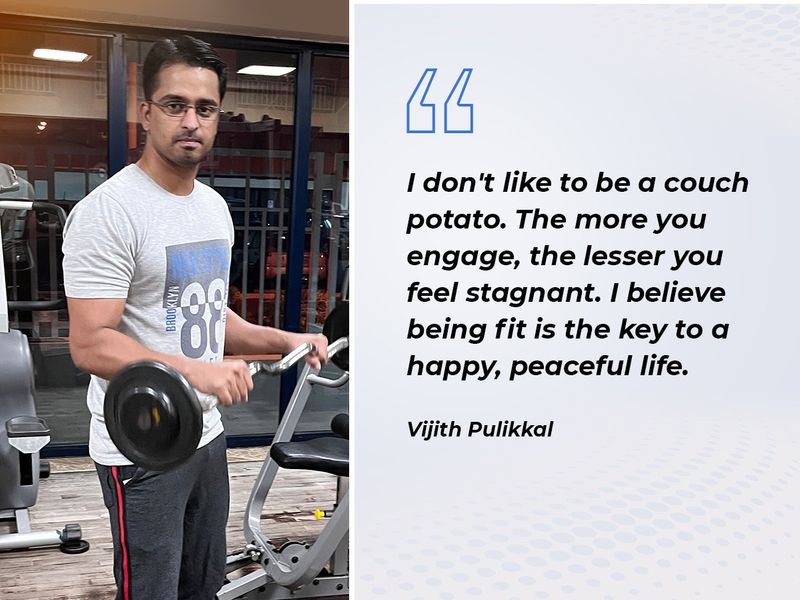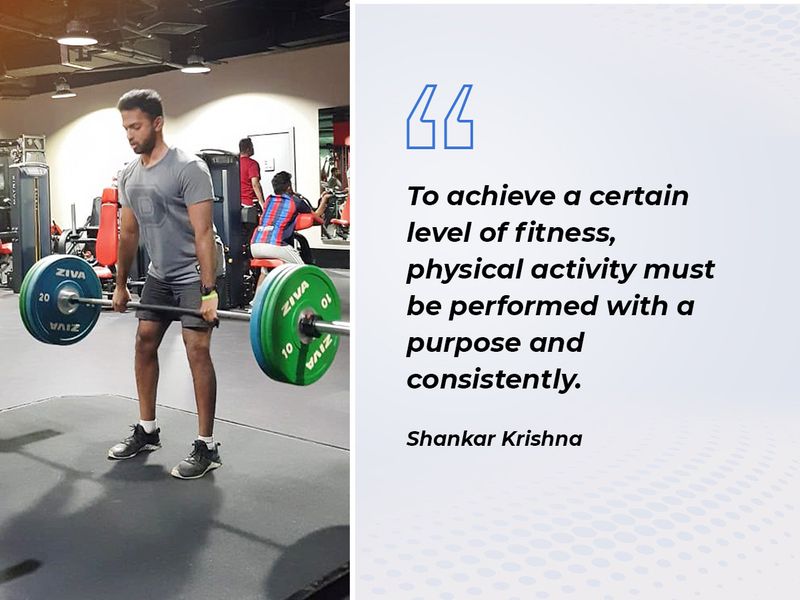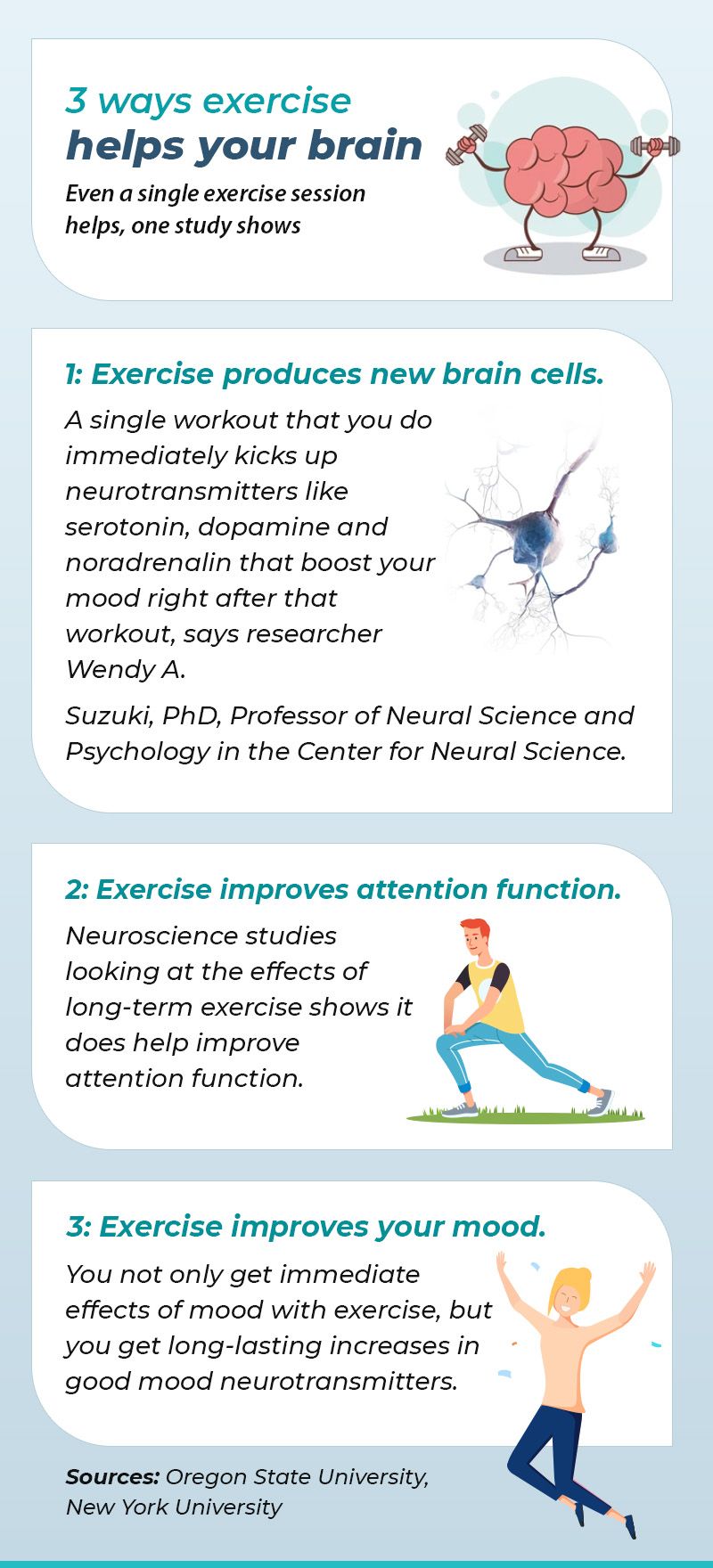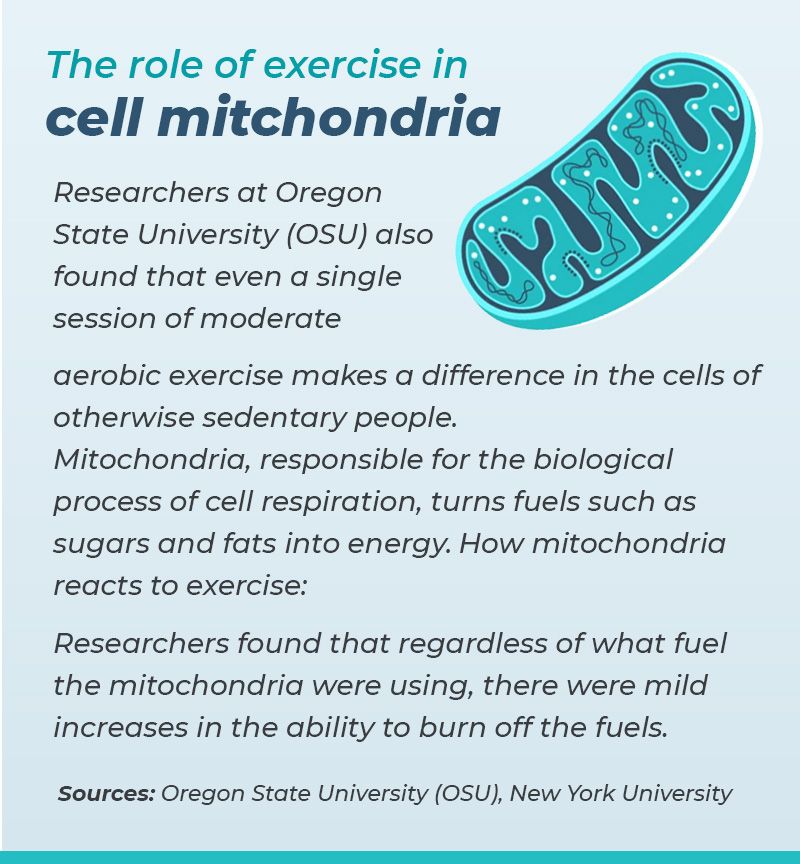◉ Here is an attempt to answer these questions. Let us start from what the physically unfit and the fit have to say, and listen to what UAE doctors and experts have to say.
Struggling for Fitness:
‘I need to get into shape, which means exercising and eating healthy from now on’
Manoj Nair, Business Editor
Every waking moment of mine is given to the thought of working my way back into feeling healthy. It’s been a long time since I even looked remotely like a healthy individual.
At 53, I am touching 102kg with a height of 5 feet 11 inches. Forget about being told about my weight by everyone I meet, I have ceased looking at the mirror – any mirror – in the hope of not seeing someone this ungainly.
So, in short, fitness and health are a constant monotone in my life, I get the signals loud and clear, as well as when on mute. But hearing them and taking up the steps – a lot many steps in my case – tend to be two different things altogether.
I have so far failed abysmally in listening to the voices of reason berating me to shape up: “get on the treadmill”, “do something good for yourself”.
I always make promises to do the right thing, to count the calories and take those mindful steps to cut down all the unwanted kilos I carry. And also to stop having people remind me of their gym hours and diet regimens each time they strike up a conversation.
I need to get back into shape and start exercising and eating healthy, not tomorrow, but from this moment.
UAE Doctor:
Exercise helps you to become happy, says Sharjah-based Dr Biju Pankappilly
A well-directed exercise programme along with a proper diet will help you to attain your goals, said Dr Biju Pankappilly, Specialist Orthopaedic Surgeon, NMC Royal Hospital, Sharjah.
Exercise is powerful medicine which improves the overall metabolism of your body and burns calories. This results in better functioning of your heart, reduces your weight, burns fat and improves fitness which is very important for a healthy lifestyle, said Dr Biju.
Another important point is that the exercise helps to make your bone stronger, tearing up your muscles and the exercises help in increasing the density of your bones, explained Dr Biju.
Dr Biju explains the three different body types — Ectomorphs, Mesomorphs, and Endomorphs — and the benefits of exercise
The Aspirant:
‘I need to get back to my exercise regime and eat healthily’
Imran Malik, Assistant Sports Editor
I was extremely health conscious before I suffered a serious injury while, ironically, representing Gulf News in a football tournament back in 2010.
I fractured my left ankle and it needed to be put in a cast for three months. This was a nightmare. I suddenly went from jogging every single night and playing tennis and cricket to keep trim to sitting on the sofa, comfort eating.
I would cross off the days on my calendar eager for the cast’s removal date to arrive much like a prisoner counting down the days before his release. Finally, it came off and the doctors advised me to take it easy for a while to allow the muscles in my ankle and leg to regain strength before I could run again.
Naturally, I ignored this. That same night I went on a 5km jog. Now, I have always enjoyed running as it gives me a sense of freedom but that night felt extra special. To not be hobbling around and be out there running again was amazing. But then COVID-19 turned our lives upside down, and the curbs meant we were all stuck at home with little else to do apart from raid the cupboards and fridge every five minutes and eat everything in sight.
I have ballooned in the past three years and every time I take a bite from a burger/pizza/fried chicken and wash it down with an ice-cold sugary soft drink a sense of guilt comes over me.
“What are you doing to yourself?” cries my inner voice. I must start listening to it again and go back to my old routine starting with a breakfast consisting of two boiled eggs, a slice of brown toast and a black coffee. For lunch, it needs to be a big salad; lots of lettuce, cucumbers, tomatoes, carrots, peppers, onions and mushrooms. A freshly squeezed orange juice should accompany it.
A nice long run in the evening should be followed by one chicken shawarma with a fresh watermelon juice. Under this diet, my stomach used to be as flat as an ironing board. Now, a barrel has replaced the six-pack. I’ve been suffering from heart palpitations lately too, which has been very worrying. I’m in my early 40s and the doctor says I must start to take better care of myself. So, here’s to a life of vegetables and exercise. I’ll start right after a cheat day tomorrow…
Fitness Expert:
Ramji Srinivasan, former strength and conditioning coach of Indian cricket team, on sport and exercise
Playing sport has multi-faceted benefits in overall fitness, said Ramji Srinivasan, former strength and conditioning coach of the Indian cricket team.
“My simple advice is to play multi-sport until the age of 14-15 to enhance overall athleticism and skills.”
It’s never too old to take up the sport as part of an exercise regime, but only after checking with your doctor, Ramji Srinivasan said.
Remember, exercise alone is not enough, a well-balanced diet and proper recovery time are a must, says Ramji Srinivasan.
Ramji Srinivasan on health and fitness
The Disciplinarian:
‘I make sure to hit the gym five days a week’
Vijith Pulikkal, Assistant Product Manager
I’m not a gym rat, but exercise is a part of my life. Travelling and photography are the two activities I appreciate the most. They require a lot of movement and stability. It keeps me engaged, and that’s how I like my life to be: capturing the moments and moving forward. Following my passion is what I enjoy and keeps me happy. And for that, fitness has a crucial role. When it comes to routine, I make sure to hit the gym five days a week. And there will be some days when you feel tired or ‘not in the mood.’ I’m sure everyone can relate to that.
So what can you do on those days? Should you quit? No! Maybe taking a break for a day is acceptable, but always push yourself. Never find excuses. When you have a bad day, finding reasons to skip your workout can be a lot easier. Don’t let your goals be derailed!
I’m an early bird. Even if it’s a weekend, I plan my day accordingly. I don’t like to be a couch potato. The more you engage, the lesser you feel stagnant. I believe being fit is the key to a happy, peaceful life.
My day starts with a cup of black tea, and I usually prefer oats or muesli for breakfast. It’s an easy but healthy option for a quick breakfast. I prefer a simple meal for lunch, and later in the evening, I finish with an early dinner. I’m a foodie who loves to try different cuisines. But I believe in portion size. Eat moderately and be mindful so you don’t need to avoid anything from your plate. Eating a moderate and varied diet can help with weight loss and control and help you stay healthy. Of course, you should feel satisfied at the end of a meal, not craving for more so that you won’t feel the urge to snack or eat anything unhealthy.
Health Expert:
Exercises should be tailored to different body types, says Dubai-based Dr Mohamed
Daily exercise will help in maintaining a healthy life, said Dr Mohamed Salim, Consultant Orthopedics and Sports Injuries, NMC Royal Hospital, Dubai.
And exercises should be tailored to different body types, said Dr Mohamed.
There are three major categories of exercises: Aerobic, Anaerobic and Agility exercises, he explained.
Dr Mohamed explains the various exercises and their benefits
The Fit Guy:
‘My fitness journey also helped me alleviate stress and anxiety, and maintain a positive mindset’
Shankar Krishna, Financial analyst based in Dubai
My fitness journey was motivated by competitiveness and the constant need to strive for excellence in sports. As an athlete, you need skill and fitness, without fitness your skills cannot flourish. I started out lifting weights during my freshman year of university to gain muscle mass, I was lucky to meet individuals who were regulars at the gym that later became some of my closest friends during my undergraduate years. I played a lot of different sports that required muscular strength and endurance, so I slowly started to include running and rowing as part of my exercise routine. As time went on I started to realise that the benefits of physical activity were not just physical but also mental. It helped me alleviate stress and anxiety, as a result, I was able to maintain a positive mindset and get through life’s toughest challenges one day at a time.
The evidence in favour of physical activity or exercise is overwhelming. If you live in an urban area, just walk down a busy street and you will notice that at least one person is jogging or one gym located within a one-kilometre radius. Exercise has a wide range of health benefits that include but is not limited to: boosting the immune system, reducing inflammation, preventing unnecessary weight gain, enhancing mood and mental health, and preventing cancer and numerous other metabolic conditions (diabetes, heart disease).
How exercise helps you
It’s a well-established fact that exercise delivers oxygen and nutrients to your body tissues. It helps your cardiovascular system to work more efficiently. Exercise and physical activity are great ways to feel better, control weight, combat diseases, improve your mood and energy, sleep better, improve attention, and a great way to have fun.
Image Credit: Vijith Pulikkal/Gulf News
How much should you exercise to stay healthy?
Experts give varying answers to this question, but most prescribe a 30-minute aerobic exercise up to four times a week as a minimum for a healthier lifestyle.
Aerobic exercise
It’s a kind of physical activity that raises the heart rate and the body’s use of oxygen (thus exercising the lungs). In general, aerobic exercise helps improve a person’s overall physical fitness.
Moderate versus vigorous exercise
Moderate aerobic exercises include:
◉ Brisk walking
◉ Biking
◉ Swimming
Vigorous aerobic exercises include:
◉ Running
◉ Heavy yardwork
◉ Aerobic dancing
Agility/Strength training can include:
◉ Use of weight machines
◉ Your body weight
◉ Heavy bags
◉ Resistance tubing or resistance paddles in the water
◉ Rock climbing
Exercise: Brain health booster
It turns out that exercise — a minimum of 30 minutes of aerobic workout three to four times a week — is a simple brain booster.
Neuroscientist Dr Wendy Suzuki, the author of Anxiety is Your Superpower: Using Anxiety to Think Better, Feel Better and Do Better, says the minimum amount you can exercise — to see the benefits — is around three to four times a week, at 30 minutes per workout. She suggests that exercise should include truly aerobic activity that elevates your heart rate.
Dr Suzuki is best known for her extensive work studying areas in the brain critical for our ability to form and retain new long-term memories.
She found 3 of the most consistent behavioural effects of exercise:
Improved executive function
Enhanced mood
Decreased stress levels
Science of Exercise
The science of exercise — known as kinesiology — is a fast-growing field. In general, it deals with the study of movement, function and performance and how that movement affects overall health.
Dr Suzuki is a professor of neuroscience and psychology at the New York University Center for Neural Science who also wrote the book Healthy Brain, Happy Life: A Personal Program to Activate Your Brain and Do Everything Better.
Her major research interest is ‘neuroplasticity’ — the brain’s ability to change and adapt as a result of experience — to explain the effects of exercise on the brain.
Suzuki said exercise changes brain chemistry and physiology, as shown by her lab experiments, which suggest that widespread brain areas and brain systems are activated after aerobic post-exercises.
How exercise transforms your brain
“Exercise is the most transformative thing that you can do for your brain today,” she said in a video. In making this claim, Dr Suzuki cites the following three reasons:
Image Credit: Vijith Pulikkal/Gulf News
The 5 principles of exercise:
1: The Overload Principle
It simply means your body will adapt to the demand you impose on it.
When you lift a heavy weight you haven’t lifted before, or you do a cardio workout that puts new demands on your heart and lungs, changes will take place in your body that will allow you to do this more easily next time.
Because the body is so adaptable, the demands we put on it must gradually and progressively increase over time, which helps us achieve long-term fitness gains.
Note: These demands must be applied gradually. Too much too fast causes the body to react negatively to excessive stress.
2: The F.I.T.T. Principle
Frequency, Intensity, Time and Type.
Increases in workload or demand can be made in these four areas to progressively “overload” the body.
That way, it adapts in the desired way.
To get better, stronger or faster, it’s important to vary your mode of exercise, intensity and duration of training.
Intensity simply means increasing the number of repetitions for a given load or increasing the pace for a given time or distance.
Time means increasing the number of sets, length of workout or distance.
Type refers to different exercises for the same muscle group.
3: The Specificity Principle
The exercise you do should be goal-specific.
If your goal is health and weight management, then you focus on total body strength, cardio and a healthy diet.
If you’re a runner wanting to improve race times, you should speed workouts in your training.
If you’re a cyclist training for a 280-km ride, focus on building up longer-distance training rides at an endurance pace.
4: The Rest and Recovery Principle
Rest and recovery, not just activity, are important for your health too. This is critical to achieving gains in fitness. The body simply cannot tolerate too much stress. This may result in “overtraining syndrome”, burnout, excess fatigue, and a weakened immune system.
Over time, it will instead “shut down” to protect itself.
While exercising every day is perfectly fine, it is best to avoid the same exercise at the same intensity daily.
With strength training, it’s important to have at least a day between sessions to allow muscles to repair and rebuild.
Working different muscle groups on different days — called a “split routine” — will allow for this recovery period for one muscle group while working another.
Low-intensity cardio can be done every day, but rest is necessary between intense sessions.
5: The ‘Use It or Lose It’ Principle
This applies to many things in life. For the body, muscles build strength (called ‘hypertrophy’) with use and lose strength (‘atrophy’) with lack of use. This includes not only the skeletal muscles but also the heart and even the brain.
Image Credit: Vijith Pulikkal/Gulf News
Fitness gadgets: What’s the buzz?
What is the role of gadgets in helping people keep fit?
They’re everywhere, these wearable fitness gadgets: Fitbits, Apple watches, Garmins and other gizmos. They keep tabs on your activities. More importantly, they help you compare your activity with your goals. Some even give off your ECG readings.
In addition to logging your fitness data, they help set reminders and even monitor the quality of your sleep and recovery.
So what exactly do fitness gadgets do?
They motivate you to boost adherence to physical activity.
Give feedback for tracking goals and increasing activity levels.
Use goal-setting techniques rewards, and social factors — to induce behaviour change.
In short: If you aim to be fit, consider using digital gear as your guide and motivation. It’s also fun. They help you set fitness goals and prods you to hit them.
What are the benefits of fitness gadgets and wearables
5. Gives off alarm or reminder of a workout you should be doing.
How fitness trackers keep you on your toes
If you aim to lose weight, one strategy is to increase your body’s activity levels across seven days.
Some people think they can just train two to three times a week and that’s it, but you need to be consistent.
◉ Activity monitor: You can’t set a daily goal of 8,000 steps on Tuesday and then on Wednesday, settle for 2,000 steps. On a fitness tracker, you can set a target and have it ensure that you finish many steps every day.
◉ Sleep monitor: Nearly all fitness trackers are built to help monitor your sleep and recovery — as recovery is just as crucial as all the other parts of fitness like nutrition.
Digital diary: Even if you don’t hit the gym regularly, a fitness tracker shows how active you’ve been during the day, at home or work.
◉ Boost awareness: A tracker is a good way to check your activity against your stated fitness goals.
In conclusion, it is important to remember that regular is the key word in your workout regime. To keep that rhythm going, you need to like the exercise/workout/sport that have been selected. So, enjoy what you do and physical and mental fitness will follow.










